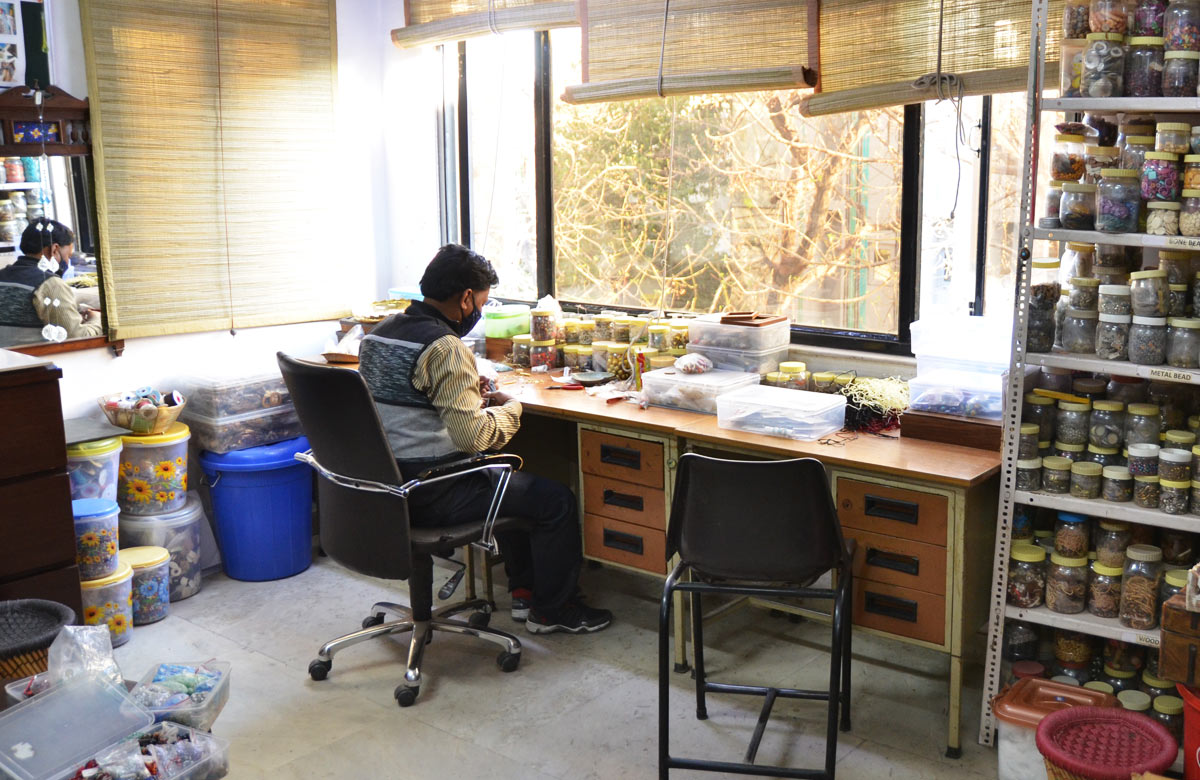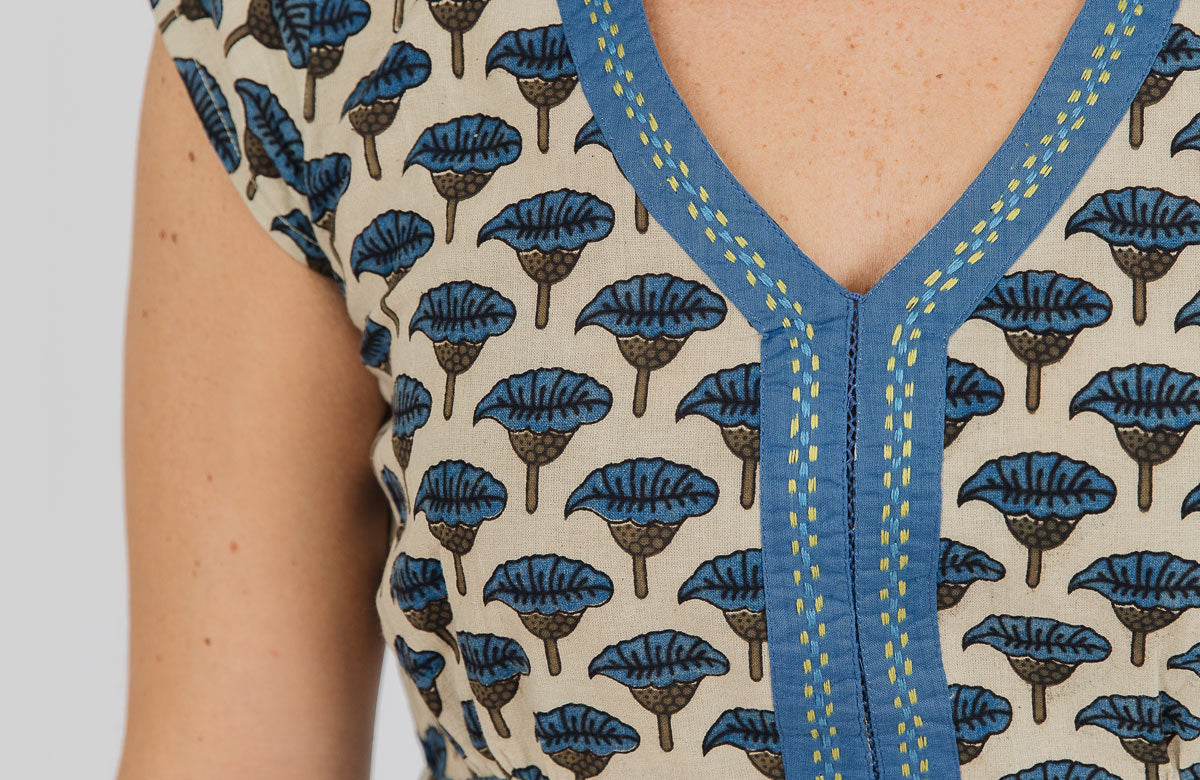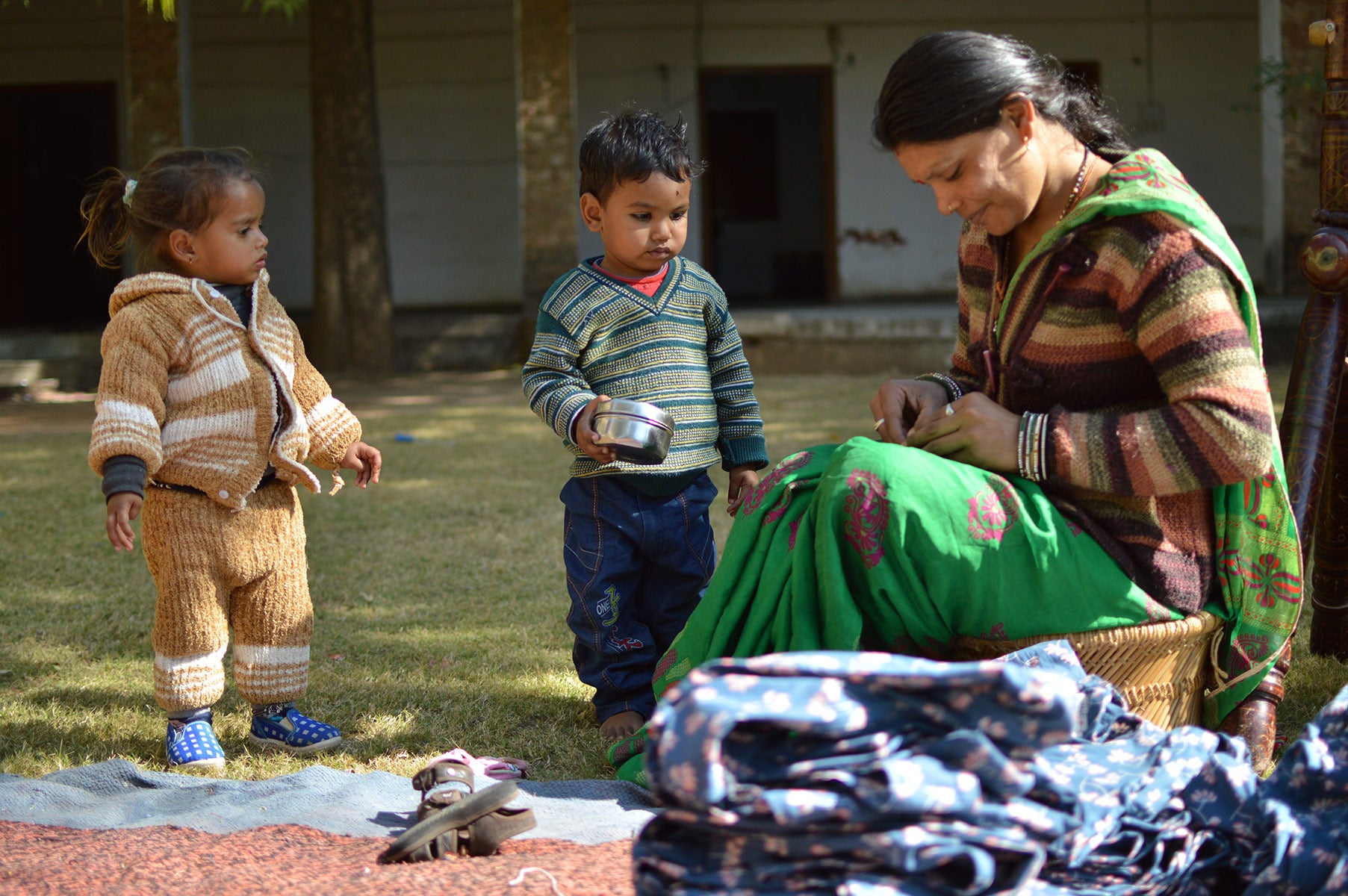Behind the Seams: a Q&A with Justine
- Katie Gavenda
- 08 Feb, 2018
I joined Mata Traders as a design intern in the summer of 2011, helping Kristin with garments (my very first Mata design was the Aurora crop top circa SS '12) and repping Mata at Chicago street fests (Lollapalooza!!). Though I had no prior experience with jewelry design, this quickly became my passion and an exciting focus for our company. In fact, we’ve expanded our collections from two per year (Spring/Summer and Fall/Winter) to five (Resort, Spring, Summer, Fall and Holiday). Sometimes I’m working on all five at once!

Handmade Jewelry Design
We begin the jewelry design and production cycle almost a year in advance for each collection. For example, we started designing the 2018 Resort collection, which just launched, back in February 2017! Here’s a snapshot of the “concept to production” journey every piece of Mata jewelry takes before becoming one of your treasured accessories.
Market Research
The first step is less than glamorous. I do a lot of market trend research, calculating targets for each category and analyzing sales stats from previous seasons to figure out which styles work and which don’t. Once that’s out of the way, the team and I begin the fun part: sketching.
Design Sketches
In the early days, I would prepare a few very detailed sketches for each concept. But as we’ve increased the number of collections, we’ve also upped the quantity of sampling, so I’ve found that quickly filling sketchbook pages with tiny rough sketches helps release a lot of ideas at once. Here’s how the Kira beaded bracelet, Gia Rope necklace and Kizette earrings started out.
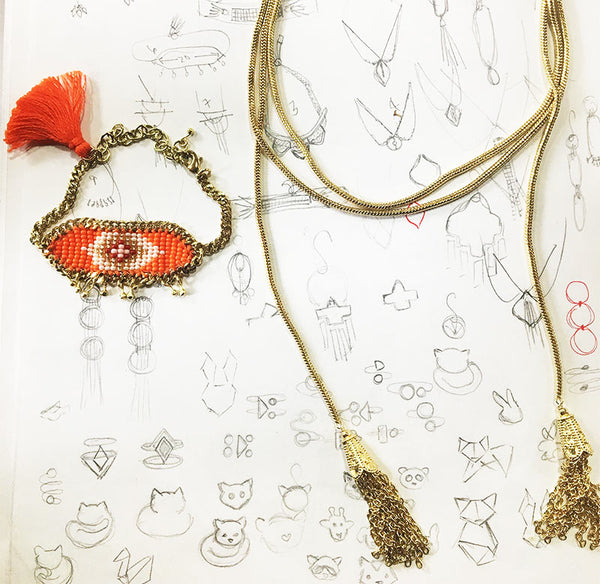

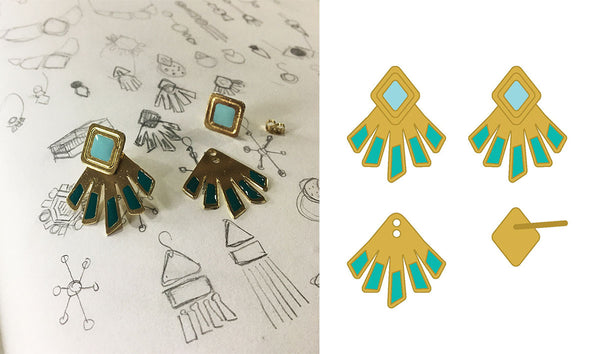
I use Adobe Illustrator design software to produce technical flats of the best sketches. Usually, only one of each concept makes it to the sampling stage, and we cut more styles from the collection after receiving the samples. A sketch often doesn’t translate well into a physical piece.
From rough (handdrawn) to refined (Illustrator).
Once we’ve settled on designs, I work on merchandising the collection as a whole. We take everybody’s technical flats and look at them together. Our Design/Production assistant Miranda contributed a lot to this particular collection. Then I work on color combinations and making sure we use all the available materials (brass, cotton thread, upcycled bone, resin, beads, upcycled horn, wood and enamel paint). The tricky part is trying not to be too matchy-matchy while creating a cohesive collection, with pieces that compliment each other in style and color.
Color Selection
I then choose colors from a thread book that our artisans in India also reference. We use the same book so there is no confusion. It’s very low tech, but does the job just right. We use this thread book not just for threaded jewelry, but for all colored material like beads, upcycled bone, paint and enamel.
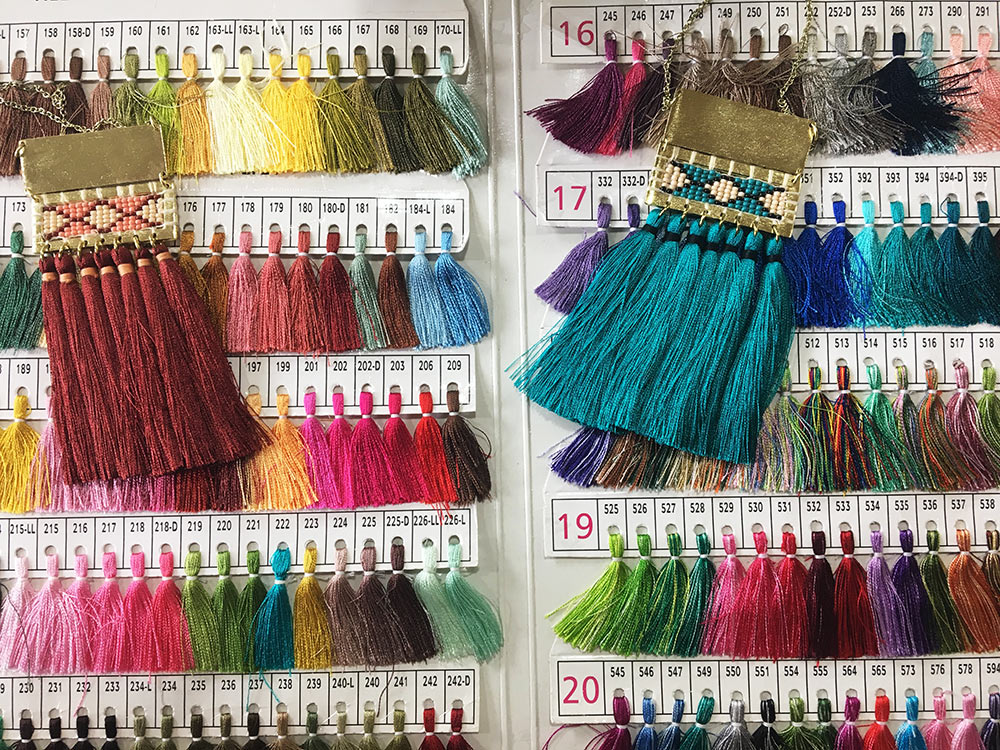

Handcrafted by Artisans
All of this design work is translated into technical specs where we show measurements, materials and assembly methods. Then off it goes to India! This stage of the process takes the longest time – a lot of back and forth with the artisans to troubleshoot designs and techniques. Thank goodness for technology and the internet because I can communicate not just through email, but also on Whatsapp, Facebook and even Instagram.
In this particular collection, we ended up with 75 styles, which we distributed between Resort and Spring. Only 40 made it to the end; it’s better to sample more than what we need. Sometimes the extra samples make their way to the Andersonville Galleria in Chicago or our in-house sales events. Mata fans often have an opportunity to score one of these unique pieces.


My first visit to India.
After working on the collection for six to seven months, we make our final selections and production begins in India. Our semi-annual trips to India usually coincide with bulk production so we’re able to see things being made in person. On every visit, I’ve learned something new about how the artisans assemble our jewelry. It’s safe to say that I’m nowhere near their skill level, but they are kind and patient teachers!
Bonus!! Here’s a sneak peek at a Spring '18 earring.
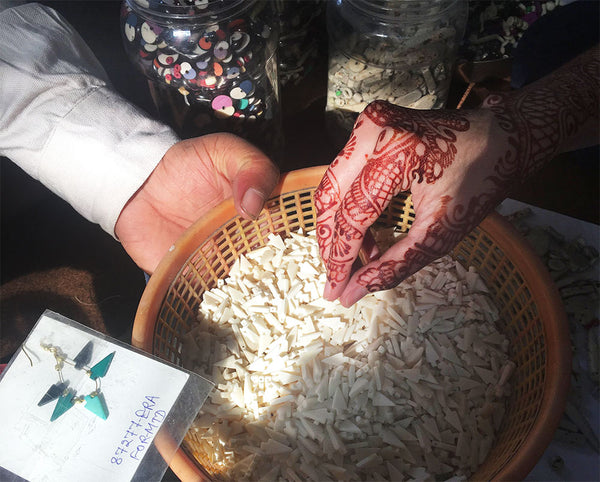

The Farida earrings were just starting to go into production during our visit with the artisans last November. Made of upcycled bone, the little triangle pieces start out plain and white before Roshni (a master at coloring) mixes the dyes by eye and soaks the bone in batches.

Artisan Collaboration
Working directly with the artisans throughout the years has helped us improve the collections. We know which materials and techniques work best. They are always showing me their own designs and new developments that I then adapt to a more western aesthetic. It’s truly a collaborative process.
Sometimes I design something that is physically impossible to produce, and the artisans are not afraid to tell me it’s a bad design. It’s very humbling. These relationships we’ve cultivated with our producers are one of my favorite parts of working in fair trade. A lot of thought, communication, and love goes into each design. It’s amazing how many hands have touched every single Mata piece before they get to you!


